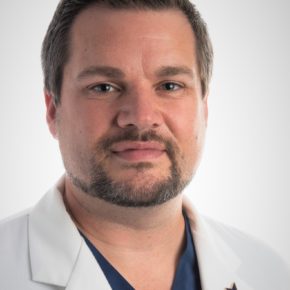Dr. Smit is a Pediatric Orthopedic Spine Surgeon and a Mid-Career Clinician-Scientist at CHEO. He is an Assistant Professor of Surgery at the University of Ottawa. Dr. Smit’s clinical interests include spinal deformity, complex hip pathologies, bone health, and fracture trauma. He leads our Spine Research Program and his research primarily focuses on the treatment of children with scoliosis, specifically vertebral body tethering. He is a Principal Investigator on over 10 studies at CHEO and the Site Investigator on two Health Canada Device trials for the treatment of Adolescent Idiopathic Scoliosis.
Areas of interest: Spine, Hip, Bone Health
Research Projects
-
Predictors of True Scaphoid Fractures in Children
27/02/2024
This study is a retrospective cohort study of children presenting to a tertiary pediatric hospital with hand or wrist injuries. Patients were grouped based on the presence of a true scaphoid fractures (confirmed on imaging) or those with clinical suspicion of a scaphoid fracture alone (no radiographic evidence of fracture). Demographic and clinical characteristics were compared with univariate and multivariate statistics to identify fracture predictors.
-
Burosumab for the treatment of cutaneous-skeletal hypophosphatemia syndrome
11/11/2023
Cutaneous-skeletal hypophosphatemia syndrome (CSHS) is a rare bone disorder featuring skeletal and skin manifestations, caused by mosaic somatic activating RAS family pathogenic variants with mosaic effects (Lim et al., 2016). CSHS is characterized by the overproduction of fibroblast growth factor-23 (FGF23), which is secreted by osteocytes in affected dysplastic bones (Ovejero et al., 2023). FGF23 causes inhibition of renal absorption and gastrointestinal absorption of phosphate by lowering sodium phosphate cotransporter activity and limiting 1,25-dihydroxyvitamin D (1,25(OH)2D) synthesis (Lim et al., 2016). Together, these biochemical aberrations result in hypophosphatemia, causing bone pain, rickets, long bone deformity, as well as impaired growth and mobility (Ovejero et al., 2016; Lim et al., 2016). Conventional treatment of CSHS with phosphate supplementation and active vitamin D does not directly address the FGF23 over-expression (Lim et al., 2014). While phosphate supplementation brings about temporary increases in serum phosphorus levels, it also increases FGF23 production, which ultimately perpetuates the renal phosphate-wasting and fails to successfully treat rickets. Burosumab is a fully human monoclonal antibody, given subcutaneously every two weeks in children, that neutralizes FGF23. Burosumab was recently shown to be superior to conventional therapy in a phase 3 randomized controlled trial in children with X-linked hypophosphatemia (XLH), another childhood-onset condition linked to FGF23 overproduction (Imel et al., 2019).
-
Mitigating the Denosumab‑Induced Rebound Phenomenon with Alternating Short‑ and Long‑Acting Anti‑resorptive Therapy in a Young Boy with Severe OI Type V
03/03/2023
-
Low radius of curvature growth-friendly rib-based implants increase the risk of developing clinically significant proximal junctional kyphosis
23/01/2023
Use of low ROC (more curved) posterior distraction implants is associated with a significantly greater increase in thoracic kyphosis which likely led to a higher risk of developing clinically significant PJK in participants with EOS.
-
Risk factors associated with prevalent vertebral fractures in Duchenne muscular dystrophy
07/11/2022
Readily measurable clinical variables were associated with prevalent VF in males with glucocorticoid-treated DMD. These variables may be useful to identify candidates for primary osteoporosis prevention after glucocorticoid initiation.

